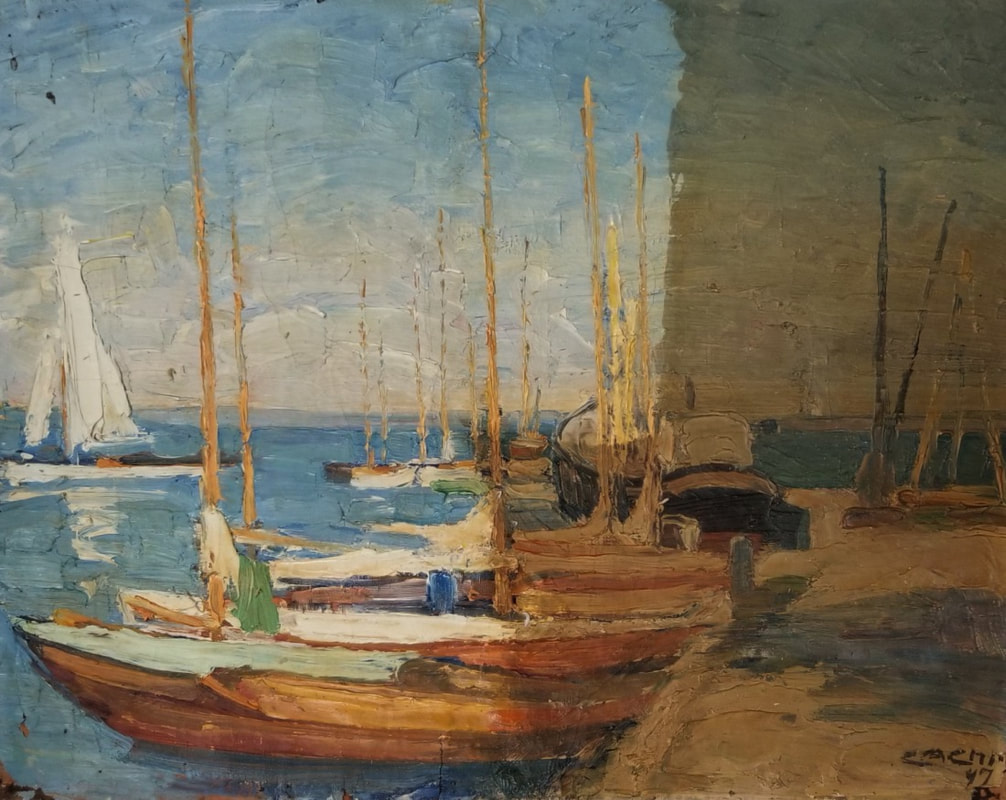|
If you spend any time around older paintings, you will inevitably bump up against the subject of restoration. By now, most of us have seen the various articles on one or two botched restoration efforts of Old Master works in Spain, with the best-known one being the 2012 incident at a church near Zaragoza. This attempt at restoration, done by a well-meaning elderly parishioner, was so dreadful that the result became known as the "monkey Christ". And yes, it was that bad.
Fortunately, most of us aren't going to be tasked with repairing 16th century works of art anytime soon. But, you may come face to face with the topic of restoration if you are thinking of buying, and perhaps even re-selling, an historic work. The first thing to know is that a little well-done restoration is not a deal-breaker... in fact, many famous paintings in museums have significant amounts of restoration. The rule of thumb when buying a painting is 10%... if more than that amount of the painting has been repaired, then you need to factor it into the price of the work. Clues as to it having been repaired will be visible patches on the back, areas on the front where the textures and finish are different (often times repaired areas are very smooth) and perhaps poor color matches in the repaired areas. Another clue will be if the painting has been lined. Often called "re-lined", which is actually incorrect (that would imply the painting has been lined twice), lining is where the canvas has been infused with wax to stabilize loose and cracked paint, torn areas, etc. Lining is a perfectly standard restoration technique but it often means the painting had fairly serious condition issues. Overpainting, also called in-painting, can usually be detected by the use of a UV light. Unfortunately, sophisticated masking varnishes are available now and clever sellers will sometimes employ these to hide the extent of the overpainting. Masking varnishes tend to glow green under a UV light so if you see that it has been used, tread carefully... there is no need for a masking varnish unless someone is trying to hide something. Having a painting cleaned is also a standard restoration practice and usually adds value to the work unless poorly done. Certain paints such as many greens are chemically unstable and are referred to as "fugitive colors". Thus, someone who gets careless in cleaning a painting can easily take these colors off, in which case the painting is referred to as having been "skinned". Suffice to say, this really clobbers the value of a painting. If you are unsure if a painting is dirty, look at the edges nearest the frame. Often times you will see a thin line of true color and this can give you a sense of what potential the painting might have. Back in my dealer days, I did vey well by buying dirty but good quality paintings since most people didn't realize how good the piece would be when cleaned. As far as the dirt goes, a gray cast often means the painting was in a home with fuel oil or coal heat. An orange cast (and sometimes accompanying odor) means nicotine. Fortunately, both usually come off rather easily with some simple household cleaners. I won't go into details here but anyone who is interested in a DIY approach is welcome to contact me for some instructions. You will want to do that before blasting away, though, trust me. One 'monkey Christ" is enough ;-) 10/8/2022 02:03:29 am
It's great that you elaborated that artworks placed in the gallery are receiving restoration for a better appearance. My mother told me yesterday that she was hoping to find a custom picture frame service as she wants her abstract artworks restored and set for a new arrangement. She asked if I had any thoughts on what would be the best option to consider. I like this helpful article. I'll tell her that she can consult a trusted custom picture framing service as they can provide details about the process. 10/9/2022 11:14:02 am
Thank you, John, for your kind comments. A picture framer will of of course be able to make your mother's work look much better. Speaking as a former gallery owner, I can't stress enough the importance of having a good frame to complement the painting. As regards the works themselves, if they are of recent vintage, then simply wiping down the surface (assuming oil or acrylic) with a slightly damp cloth will be likely be sufficient to remove regular dust. Once completely dry, it might also be beneficial to apply a new coat of spray varnish if the work is an oil. Comments are closed.
|
AuthorBryan H. Roberts is a professional appraiser in Sarasota, FL. He is a member of the Florida State Guardianship Association and currently serves on the board of the local FSGA chapter. He is a past president of the Sarasota County Aging Network, a non-profit that provides grants to other non-profits benefiting seniors in need and is also a board member of PEL, an area non-profit whose resale store profits support programs and scholarships for at-risk and disadvantaged youth. He is certified in the latest Uniform Standards of Appraisal Practice (USPAP) Equivalent Archives
May 2024
Categories |


 RSS Feed
RSS Feed